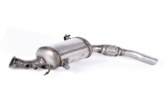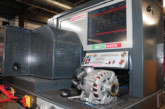
Klarius reports on the Government’s decision to ban the sale of vehicles with a combustion engine by 2035. Here, the company questions whether the measures needed to support the change have been given enough thought.
Using Government policy to improve safety and push society towards a more sustainable future with a lower environmental impact is highly commendable. However, policy must be rooted in the possible.
The Government recently announced that it will ban the sale of all internal combustion engine cars – including hybrids – by 2035. So, within 15 years, we are expected to build an entire infrastructure for passenger vehicles, including the power sources for the electricity and charging points. Is this really feasible?
This expectation comes from a Government that has still not enacted legislation that requires replacement exhaust systems to be type-approved as is the case in the rest of Europe, allowing pollution to continue to increase due to the fitting of low quality, non-compliant components.
So, what is the reality?
Problem #1 – parking
The Government published its own figures for ‘parking provision’ a couple of years ago, stating that 32% of dwellings relied on street parking, and that 2% of homes had no parking provision whatsoever. 34% of the population, therefore, will need to charge their cars at work or sit around at charging stations during a commute.
Problem #2 – infrastructure and power generation
Even if everyone could charge their vehicle at home, the National Grid’s own predictions for power requirements, alongside the UK’s policy and plans for building new power stations, mean the country would become increasingly reliant on imported electricity. This would lead to the total electricity usage rising from 10% to over 30%, raising serious energy security concerns. The country would also need the physical infrastructure upgrades to handle the additional load on the grid.
Problem #3 – public transport
So, in 2035, we are scheduled to enter a period of re-birth, with clean, efficient public transport that is fast and convenient for all to use. How much is this going to cost, and how will it be paid for? To move the majority of journeys from private transport to shared, public, or communal transport in that time frame will also require a huge shift in cultural norms, and this would surely require a commitment by successive governments, as well as overwhelming public support, to achieve.
Problem #4 – other vehicles
Pollution from buses, trains, off-highway equipment, emergency power and marine engines is already a major issue. Euro 6-compliant passenger vehicles are very clean, unlike the average train. Will the power sources of these be swapped over to electricity only? No, as the technology does not work that well yet. Power density for batteries alone is not practical. Many of these sources are there to stand in for an absence of a practical electrical power supply, or a drop-in grid supply.
Problem #5 – purchase cost and jobs
Has anyone checked the price and availability of the rare earth metals used to create the motors and batteries used in EVs? They are on the rise. The average EV city car purchase will still be two or three times more expensive than a liquid-fuelled car, which just isn’t practical unless the government also has a plan for doubling everyone’s salary.
The reality is that the government should consult with the automotive industry, the aftermarket and society in general before making impractical policy statements on banning petrol and diesel-fuelled cars. There needs to be a sensible transition plan that protects jobs and people’s freedom of choice, as well as one that improves sustainability and pollution.







